
Smart process cleans up contaminated water.
A smart material identifies and destroys toxic pollutants in water. When exposed to the offending molecules, tiny light-emitting zinc oxide particles glow dimly, burn them up, and glow brightly to show they’ve finished 1 .
The advantage of such an approach, say Prashant Kamat and co-workers at the University of Notre Dame in Indiana, is that the energy-consuming burn-up stage switches on only when pollutants are pre

Scientists from Newcastle University are using llama droppings to help combat environmental problems caused by polluted water seeping from abandoned silver and tin mines in the Bolivian Andes.
The project is being spearheaded by Paul Younger, Professor of Hydrogeochemical Engineering at Newcastle University. It has been adapted from a community-based natural regeneration technique which uses waste materials to treat polluted mine waters. Professor Younger pioneered the technique, along with

Scientists examining the work that influenced Charles Darwin have rediscovered the details of what may be the world’s first ecological experiment.
Darwin, in his Origin of Species of 1859, referred to an experiment investigating the biology of grassland plants that showed how a greater diversity of grasses planted in experimental plots was responsible for greater production of plant matter. This subject, the relationship between biodiversity and the functioning of ecosystems, is curre
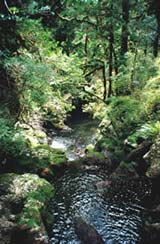
South American streams call current nitrogen-cycle theory into question.
Pollution may have altered northern hemisphere forests dramatically. The surprise finding that clean forests use nitrogen differently to polluted ones emphasizes the effect that humans have on the planet’s nitrogen cycle 1 . It may even prompt a rethink of the way that this cycle works.
Humans have added vast amounts of nitrogen to the earth’s ecosystems. The element fertilizes plants. T

The atmosphere and oceans exist in a delicate state of balance according to research co-ordinated by the University of East Anglia (UEA) and published this month by the Natural Environment Research Council (NERC).
The recently completed five year research programme of Atmospheric Chemistry Studies in the Oceanic Environment (ACSOE) concludes that atmospheric pollution travels much further than previously thought and that this has important consequences for global chemistry and climate.

A novel research project is looking at ways to recycle plastic bottles for use in the fashion industry in a bid to halt the landfill crisis.
Although recycled PET (Polyethylene terepthalate) has been used in a limited way in the fashion industry, Northumbria University PhD student Yukie Nakano is working to identify the barriers affecting the wider introduction of recycled textile products. Yukie, who is also a research assistant in the Centre for Design Research, is also experimenting with

“The occurrence of ozone mini-holes over Europe increases and any ozone layer recovery could only become measurable around 2010 at the earliest” concludes an assessment report, released today, on European research in the stratosphere. The report concerns loss of ozone, increases in ultraviolet radiation as well as the impact of aircraft on the atmosphere. It covers European research efforts during the period 1996-2000 including the Third European Stratospheric Experiment on Ozone – THESEO, which is t
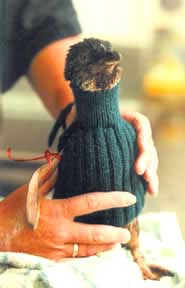
Knitted pullovers protect penguins from oil discharge
Knitters around the world have pulled together to save thousands of oil-soaked little penguins on Phillip Island, southern Australia.
Ten thousand penguin-sized, pure-wool jumpers have flooded into the offices of the Tasmanian Conservation Trust in response to their call for emergency insulation for a vulnerable population of world’s smallest penguins – sometimes known as fairy penguins.
In mid-December 2001 a cru
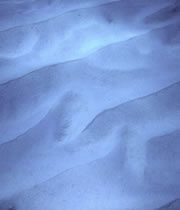
Researchers name the microbes that could produce power by munching pollution.
Bacteria could clear up oil spills and generate electricity at the same time. US scientists have identified microbes that produce power as they digest organic waste 1 .
The bacteria strip electrons from carbon in ocean sediments to convert it into the carbon dioxide they need for metabolism and growth. Usually the organisms just dump the electrons onto iron or sulphate minerals on

Aquatic organisms often hitch a ride in the ballast tanks of ocean-crossing ships, ending up in ports far from their native habitats. Upon arrival, these alien species can wreak havoc in their new environs, forcing out native species and incurring huge economic costs. Now a new report published in the journal Biological Conservation suggests that a certain anti-corrosion technique could help prevent such invasions while saving the shipping industry hundreds of thousands of dollars a year.
C
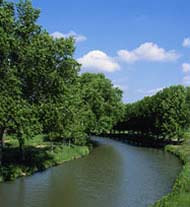
Urban wildlife may not use green corridors.
Green corridors do little to aid wildlife, say UK ecologists. Their discovery that isolated wild ground contains just as many plant species as do patches linked by continuous greenery casts doubt on current conservation priorities.
“The proportion of organisms that use [wildlife corridors] is exceedingly small,” says botanist Mark Hill of the Centre for Ecology and Hydrology in Monks Wood. Only vertebrates seem to benefit, he says.
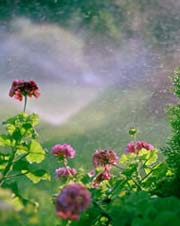
Keeping parks pretty means tailoring the trees to their source of water.
Irrigation water recycled from sewage can damage many plant species, new research has found 1 . The results show that landscape architects should tailor their choice of plants to the type of water they will receive.
Dale Devitt of the University of Nevada at Reno and colleagues began studying the effects of different water sources on plants after reports that ’reuse’ water had damaged tr

The question of which forces control terrestrial ecosystems lies at the heart of a long-standing debate among ecologists. One theory, the so-called bottom-up theory, suggests that plant defense mechanisms exert control by limiting food availability for herbivores. Top-down theorists, however, suggest that predators limit the numbers of herbivores and hence their impact on the vegetation. Now new findings in the current issue of the journal Science that describe animal communities isolated for 15 year
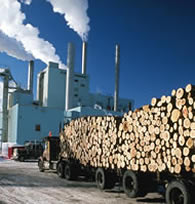
New catalyst means greener paper is not pulp fiction.
Pollution from paper production could be cut, say US chemists, with a new way of refining wood pulp 1 . But the process must go through the mill before it can convert industry.
During paper production, gluey wood component lignin is stripped out to leave stringy cellulose. The harsh chemicals used create environmental pollutants, such as toxic and long-lasting chlorinated compounds.
A new chemical
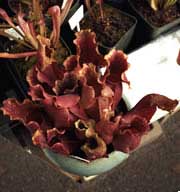
Mosquitoes’ evolve rapidly in response to global warming.
Mosquitoes are holing up later as winters get warmer, US ecologists have shown. This is the first genetic adaptation to global warming to be identified. Less flexible animals could face extinction, they warn.
The North American mosquito Wyeomyia smithii uses shortening day length to judge when to bed down for the winter. Modern mozzies wait nine days more than their ancestors did in 1972, William Bradshaw and Christin
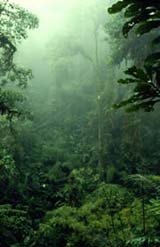
Deforestation is drying out cloud forests.
“It drips,” says ecologist Robert Lawton, describing the Costa Rican cloud forest, “and it’s plastered with plants of all sizes climbing over each other. Stand still for long and they’re growing on you.”
Now the lush life he describes may be threatened. Satellite pictures show that deforestation at the foot of western Costa Rican mountains is drying out swirling summit mists.
When warm, wet tradewinds blowing off the Caribb